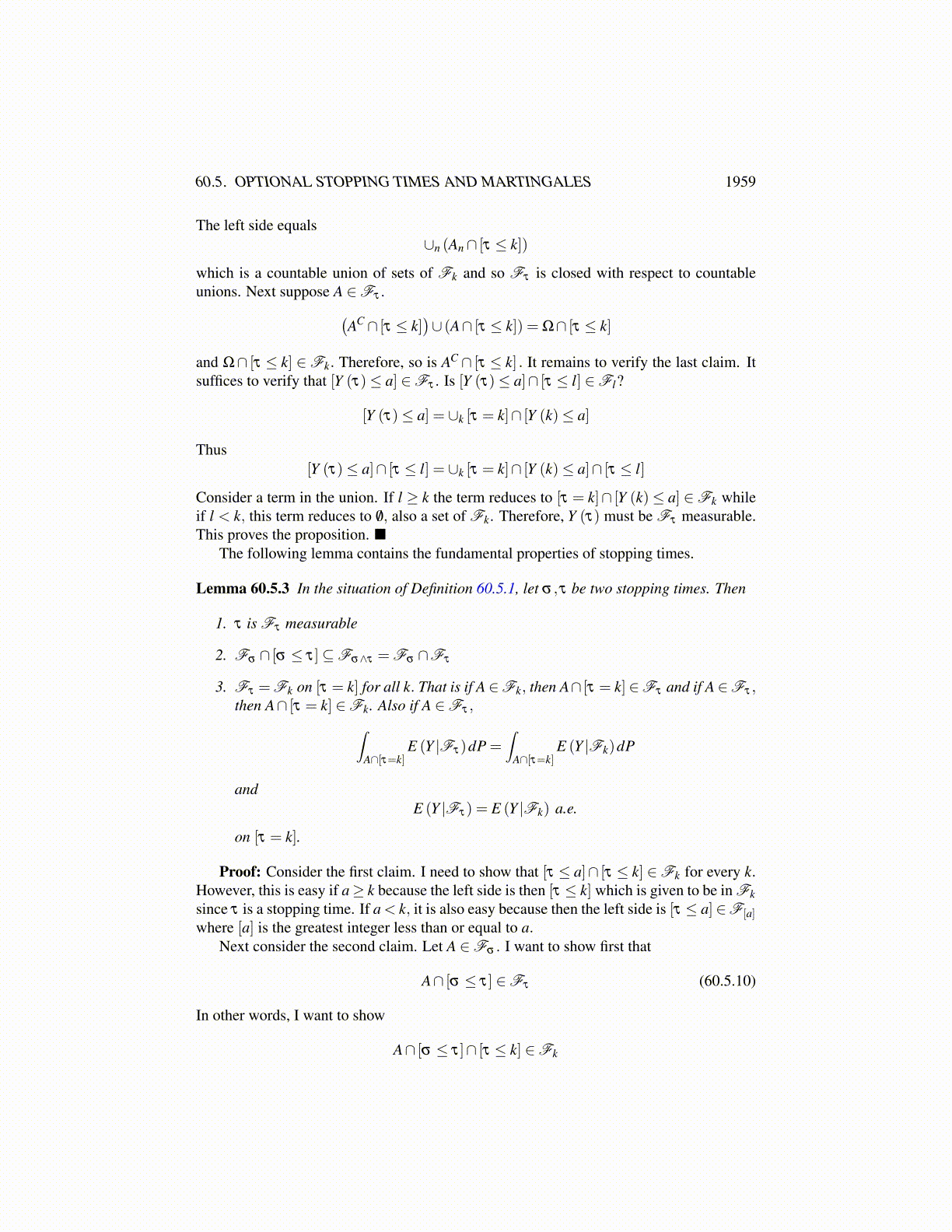
60.4. STOPPING TIMES 1959
which is exactly the same form as 60.4.9 except m is replaced with m−1. Now repeat thisprocess till you get the following inequality∫
A∩[S=i]XT dP≥
i+1
∑j=i
∫A∩[S=i]∩[T= j]
XT dP+∫
A∩[S=i]∩[T≥i+2]Xi+2dP
The right hand side equals
i+1
∑j=i
∫A∩[S=i]∩[T= j]
XT dP+∫
A∩[S=i]∩[T≤i+1]CXi+2dP
≥i+1
∑j=i
∫A∩[S=i]∩[T= j]
XT dP+∫
A∩[S=i]∩[T≤i+1]CXi+1dP
=∫
A∩[S=i]∩[T=i]XT dP+
∫A∩[S=i]∩[T=i+1]
XT dP+∫
A∩[S=i]∩[T≤i+1]CXi+1dP
=∫
A∩[S=i]∩[T=i]XidP+
∫A∩[S=i]∩[T=i+1]
Xi+1dP+∫
A∩[S=i]∩[T>i+1]Xi+1dP
=∫
A∩[S=i]∩[T=i]XidP+
∫A∩[S=i]∩[T≥i+1]
Xi+1dP
=∫
A∩[S=i]∩[T=i]XidP+
∫A∩[S=i]∩[T≤i]C
Xi+1dP
≥∫
A∩[S=i]∩[T=i]XidP+
∫A∩[S=i]∩[T≤i]C
XidP
=∫
A∩[S=i]∩[T=i]XidP+
∫A∩[S=i]∩[T>i]
XidP
=∫
A∩[S=i]∩[T≥i]XidP =
∫A∩[S=i]
XidP =∫
A∩[S=i]XSdP
In the case where {Xn} is a martingale, you replace every occurance of ≥ in the aboveargument with =. This proves the lemma.
This lemma is called the optional sampling theorem. Another version of this theoremis the case where you have an increasing sequence of stopping times, {Tn}∞
n=1 . Thus if{Xn} is a sequence of random variables each Fn measurable, the sequence {XTn} is also asequence of random variables such that XTn is measurable with respect to FTn where FTn
is an increasing sequence of σ fields. In the case where Xn is a submartingale (martingale)it is reasonable to ask whether {XTn} is also a submartingale (martingale). The optionalsampling theorem says this is often the case.
Theorem 60.4.4 Let {Tn} be an increasing bounded sequence of stopping times and let{Xn} be a submartingale (martingale) adapted to the increasing sequence of σ algebras,{Fn} . Then {XTn} is a submartingale (martingale) adapted to the increasing sequence ofσ algebras {FTn} .